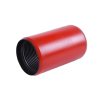- Afrikaans
- Albanian
- Amharic
- Arabic
- Armenian
- Azerbaijani
- Basque
- Belarusian
- Bengali
- Bosnian
- Bulgarian
- Catalan
- Cebuano
- Corsican
- Croatian
- Czech
- Danish
- Dutch
- English
- Esperanto
- Estonian
- Finnish
- French
- Frisian
- Galician
- Georgian
- German
- Greek
- Gujarati
- Haitian Creole
- hausa
- hawaiian
- Hebrew
- Hindi
- Miao
- Hungarian
- Icelandic
- igbo
- Indonesian
- irish
- Italian
- Japanese
- Javanese
- Kannada
- kazakh
- Khmer
- Rwandese
- Korean
- Kurdish
- Kyrgyz
- Lao
- Latin
- Latvian
- Lithuanian
- Luxembourgish
- Macedonian
- Malgashi
- Malay
- Malayalam
- Maltese
- Maori
- Marathi
- Mongolian
- Myanmar
- Nepali
- Norwegian
- Norwegian
- Occitan
- Pashto
- Persian
- Polish
- Portuguese
- Punjabi
- Romanian
- Russian
- Samoan
- Scottish Gaelic
- Serbian
- Sesotho
- Shona
- Sindhi
- Sinhala
- Slovak
- Slovenian
- Somali
- Spanish
- Sundanese
- Swahili
- Swedish
- Tagalog
- Tajik
- Tamil
- Tatar
- Telugu
- Thai
- Turkish
- Turkmen
- Ukrainian
- Urdu
- Uighur
- Uzbek
- Vietnamese
- Welsh
- Bantu
- Yiddish
- Yoruba
- Zulu
pipe bull plug
Understanding Pipe Bull Plugs Applications and Importance
In the world of plumbing and piping systems, various components come together to ensure seamless operations and prevent leaks. One of the essential components that often goes overlooked is the pipe bull plug. This seemingly simple object plays a significant role in maintaining the integrity of pipelines, making it a crucial element for both industrial and residential plumbing tasks.
What is a Pipe Bull Plug?
A pipe bull plug, commonly referred to simply as a bull plug, is a type of fitting used to close the end of a pipe. Typically made from materials such as steel, stainless steel, plastic, or brass, these plugs come in various sizes to accommodate different pipe diameters. Unlike regular plugs, bull plugs feature a rounded top, which helps to prevent fluid buildup and allows for efficient drainage if needed.
Applications of Pipe Bull Plugs
1. Preventing Leakage One of the primary functions of a pipe bull plug is to effectively seal pipe ends to prevent leaks. In systems carrying water, gas, or chemicals, a leak can pose serious safety and environmental risks. Bull plugs ensure that the system remains airtight and secure during operation and maintenance.
2. Maintaining Pressure In many industrial applications, particularly in the oil and gas sector, maintaining pressure within a pipeline is critically important. Bull plugs help to seal the system tightly, allowing for the necessary pressure levels to be achieved and maintained, which is vital for efficient operation.
3. Temporary Solutions During repairs or upgrades to a piping system, it is often necessary to disconnect certain sections. Bull plugs provide a temporary solution by sealing off sections of pipe, thereby preventing the escape of fluids and maintaining system integrity until repairs are completed.
pipe bull plug

4. Testing and Maintenance When pressure testing pipelines, bull plugs are used to close off sections of the system to monitor performance and identify leaks. They are essential in ensuring that tests yield accurate results, which is crucial for maintaining safety standards.
Importance of Material Choice
The choice of material for a pipe bull plug is paramount, as it must be compatible with the specific type of fluid being transported through the pipe system. For example, corrosive chemicals would necessitate a plug made from a highly resistant material such as PTFE (Teflon) or certain grades of stainless steel. On the other hand, for general water applications, standard plastic or brass may suffice. Selecting the right material contributes to the overall safety and longevity of the piping system.
Installation and Best Practices
Installing a pipe bull plug may seem straightforward, but adherence to certain best practices is crucial to ensure a secure fit. It is essential to clean the pipe ends before installation, using appropriate tools to achieve a snug fit. Additionally, considering the use of thread sealant can enhance leakage prevention. Regular inspection of bull plugs is recommended to ensure they’re not degraded or corroded, which could lead to system failures.
Conclusion
Pipe bull plugs, while often underestimated, serve a wealth of important functions within plumbing and piping systems. From preventing leaks to aiding in pressure maintenance and system testing, these fittings are essential for the safe and efficient operation of various applications. Understanding their significance and proper usage can lead to better maintenance practices, ensuring the integrity of piping systems over time. As with many plumbing components, investing in high-quality materials and adhering to best practices during installation and maintenance can save time, resources, and potential hazards in the long run.
-
Tubing Pup Joints: Essential Components for Oil and Gas OperationsNewsJul.10,2025
-
Pup Joints: Essential Components for Reliable Drilling OperationsNewsJul.10,2025
-
Pipe Couplings: Connecting Your World EfficientlyNewsJul.10,2025
-
Mastering Oilfield Operations with Quality Tubing and CasingNewsJul.10,2025
-
High-Quality Casing Couplings for Every NeedNewsJul.10,2025
-
Boost Your Drilling Efficiency with Premium Crossover Tools & Seating NipplesNewsJul.10,2025







